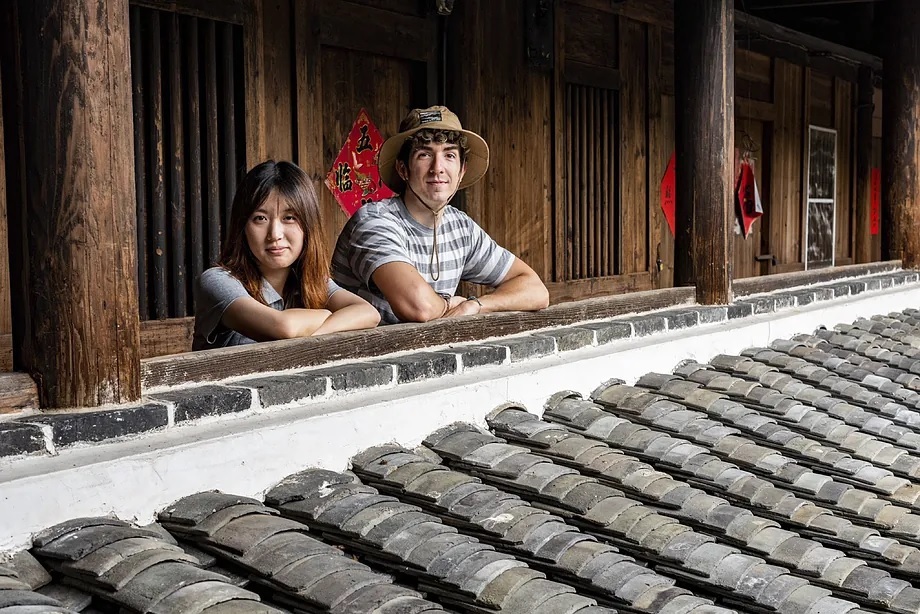In southern China, in the province of Fujian, nestled between valleys surrounded by mountains, strange disc-shaped earth constructions rise, presenting the arrangement of the seven main stars of the Big Dipper. These are the famous tulou of the Hakka, an ethnic group with a history of persecutions, bombings, and migrations, who have tried to live isolated from the outside world by taking refuge in their impenetrable circular communes.
In one of these three-story tulou in the village of Hekeng, director Adrià Guxens (Tarragona, 1992) managed to enter to film a short movie that he will present on Sunday, August 4, at the International Film Festival of Cerdanya (Girona). The film, A Hakka Song, explores the life of a self-managed community struggling to maintain its identity amidst the exodus of its youth to seek opportunities in the cities, and the tourism boom that threatens to turn their refuge into an amusement park.
"The residents of the tulouhad never seen a Westerner. Nor a video camera. The children would hide in fear when I entered through the door," recalls Guxens during a previous stop at the Miguel de Cervantes Library in Shanghai before taking to Spain the third short film he has made related to China, where he also teaches film at a school in the city of Dalian.
"Inside the tulou, there is an incredible sense of community. Hundreds of people eat and pray together every day. The concept of time disappears inside. They operate following a natural cycle of light, waking up with the rooster's call," describes the director. "They are farmers who have their crops and animals inside a fortress with a single entrance because it was built to withstand sieges." On the ground floor of the tulou are the large meeting courtyard, kitchens, the farm, and the temple dedicated to ancestors. On the middle floor are the pantries, and on the third are the small living quarters where families sleep. There is always a leader, usually an older man chosen by the neighbors for being the wisest. "The elders told me that during the Japanese invasion in World War II, they were bombed because the Japanese imperial troops thought the tulou were missile bases. But their greatest enemy has been fires. Once, a tiger sneaked in, and they decided to scare it away with fire, but it got out of control and everything burned," Guxens recounts.
The tulou have always received many visits from Chinese tourists who wanted to see how life is in these cylindrical constructions that began to appear in the 13th century. But after the 2020 release of the successful adaptation of the animated classic Mulan, many international curious visitors began to peek into the Hakka fortress. In Disney's film, the warrior lives in a tulou where the emperor's envoys arrive to recruit one man per family for the war. This sparked a controversy on Chinese social media due to the historical ignorance of the scriptwriters, as Mulan's story takes place in northern China during the Wei dynasty, long before the construction of the first tulou, which are only found in the south.
